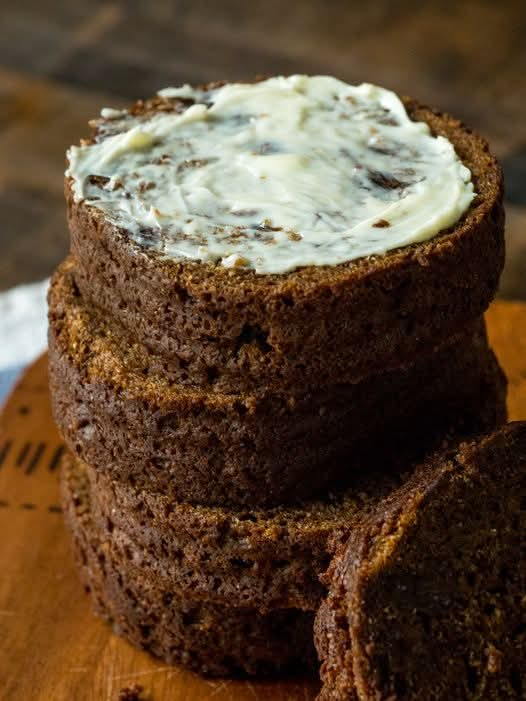Sounds like you’re talking about New England Indian Pudding — a traditional dessert that’s subtly sweet, warmly spiced, and famous for being baked in a unique way. I’ll create a big, detailed recipe for you, with all the sections you asked for: introduction, ingredients, instructions, methods, history, benefits, formation, conclusion, lovers, nutrition, and more.
🍮 Traditional New England Indian Pudding
🌟 Introduction
Indian Pudding is a beloved New England classic that dates back to Colonial America. Unlike modern cakes and pies, this dessert has a rich, custard-like texture made from cornmeal, molasses, milk, and warming spices. What makes it truly unique is not only the rustic ingredients but also the way it is baked slowly in a heavy baking dish (traditionally a cast-iron or earthenware pot), which gives it its deep flavor and velvety texture. This pudding is subtle in sweetness, comforting in warmth, and timeless in flavor.
🛒 Ingredients
- 4 cups whole milk
- ½ cup yellow cornmeal
- ⅓ cup molasses (dark, unsulphured)
- ¼ cup brown sugar (light or dark)
- 3 tbsp unsalted butter
- 1 tsp ground cinnamon
- ½ tsp ground ginger
- ¼ tsp ground nutmeg
- ¼ tsp salt
- 1 tsp pure vanilla extract
- 1 large egg, beaten
- Optional topping: vanilla ice cream or whipped cream
👩🍳 Instructions
- Preheat oven to 325°F (160°C). Butter a deep baking dish (earthenware or cast iron is best).
- In a medium saucepan, heat 3 cups of milk until warm (not boiling).
- Whisk in the cornmeal slowly to avoid lumps, cooking gently for 10 minutes until thickened.
- Stir in molasses, brown sugar, butter, spices, salt, and vanilla. Mix until smooth.
- Temper the beaten egg with a spoonful of warm mixture, then stir egg into the pudding base.
- Pour mixture into your prepared baking dish.
- Add the remaining 1 cup of milk by pouring it gently on top without stirring — this will slowly absorb during baking, creating layers of flavor.
- Bake for 2 to 2½ hours until the pudding is set but still soft in the middle.
- Serve warm with ice cream or whipped cream for a classic New England finish.
🥄 Methods
- Slow baking: This dessert is not rushed; its richness develops over a long, gentle bake.
- Layering with milk: The final cup of milk creates its signature creamy pockets.
- Traditional vessel: Using cast-iron or ceramic dishes enhances the deep caramelized notes.
📜 History
Indian Pudding is one of America’s oldest desserts. Colonists adapted traditional English “Hasty Pudding” but replaced wheat with cornmeal (called “Indian meal” at the time) and sweetened it with molasses, a common New England staple. Over time, it became a hallmark of regional cooking and is still considered one of the truest taste memories of early America.
💪 Benefits
- Nutrient-rich: Cornmeal provides fiber and slow energy.
- Molasses boost: Rich in iron, calcium, and magnesium.
- Warm spices: Cinnamon and ginger aid digestion and boost circulation.
- Comfort food: A wholesome dessert for colder months, filling both body and spirit.
🏗 Formation
The dessert forms in layers:
- A custardy base from the egg and milk.
- A grainy sweetness from the cornmeal.
- A caramel-like richness from molasses and sugar.
- A soft top from the milk poured over before baking.
❤️ Lovers of This Dish
- New Englanders: Generations grew up eating it at holidays and Sunday dinners.
- History buffs: Those who love authentic colonial recipes.
- Comfort food seekers: Anyone who wants a warm, cozy dessert on a chilly day.
🥗 Nutrition (per serving, ~8 servings)
- Calories: ~260
- Fat: 8g
- Carbohydrates: 42g
- Fiber: 2g
- Sugar: 25g
- Protein: 6g
🏁 Conclusion
Indian Pudding is more than just a dessert — it’s a piece of American culinary history. Subtly sweet, richly spiced, and comfortingly rustic, it reminds us of the resourcefulness of early New England kitchens. Whether you enjoy it with vanilla ice cream melting into the warm pudding or with just a spoonful of cream, it’s a dish that connects past and present with every bite.
✨Would you like me to also give you a fancier, restaurant-style version of Indian Pudding (with caramel drizzle and whipped cream layers), or keep it fully traditional?
